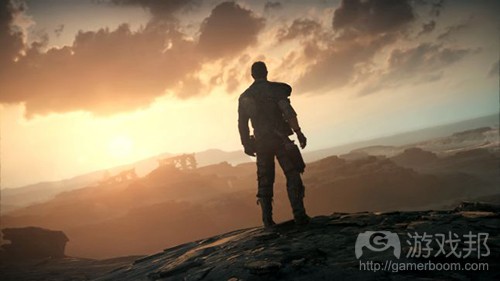Josh Bycer谈游戏设计的前提是理解前人开拓的价值设计
Josh Bycer谈游戏设计的前提是理解前人开拓的价值设计
原作者:Josh Bycer 译者:Willow Wu
在Game-Wisdom频道上,有玩家向我提出了个问题: 如果有打算做出一个游戏成品的话,要如何开始学习对应的游戏类型?乍一看这问题很简单,但是经过细想之后,我觉得很难回答。学习游戏设计和测评游戏是不一样的,你需要真正了解游戏设计的本质。
对普通消费者来说,电子游戏是一个相当复杂研究课题。除非是early access阶段,不然你看到都是游戏的最终形态,很多人都没有概念要花费都少心血才能有这样的成品。游戏设计可能(通常是一定会)在开发过程中产生变动。如果你一开始没有意识到这些事情,那么你也很难知道设计时会出现哪些陷阱和问题。
另外一个挑战就是尽管游戏是视觉媒体产品,但你自己玩和看别人玩是两种完全不同的体验。同理,如果不亲自参与UI设计,你很难理解UI设计是怎么一回事,甚至是不可能。除此之外,如果涉及到老游戏和复古游戏,我只能告诉你现在要通过正规途径得到它们真的越来越难了,非常遗憾。
所以回到开头的问题——该如何学习游戏设计?测评游戏和分析游戏是两码事。测评的目的是看看这个游戏好不好玩,定价是否合理等等。人们很少从长期发展角度来测评某款游戏,多数聚焦于当下的感受。学习设计的重点在于理解游戏的哪些方面是成功的,哪些方面是失败的,观察游戏的深层结构。好游戏会出现失败的设计元素,反之亦然。
一个伟大的游戏或者伟大的设计元素经受得住岁月的冲刷,这就是为什么像《超级马里奥世界》这样的游戏在人们心中仍处于殿堂级的位置。
如果某个人之前从没研究过任何电子游戏,现在叫他立刻去做,这就像是把一个人扔在异国他乡说:“你要学会把这门语言说的很流利。”
就如制作电子游戏一样,学习游戏设计没有固定的步骤清单,但是我可以跟你分享一些我多年来学到的技巧。
第一是无需赘述的:你得玩很多游戏。对那些测评人来说,这就是进入游戏行业所要做的事。然而,你不能只玩那些热门游戏,你得尽可能地玩更多目标类型领域中的游戏。
如果想玩平台游戏,大家可以去玩《超级马里奥兄弟》,但是《索尼克》《蚯蚓战士》《辛普森一家》《兔八哥》《七喜小子》《摩登原始人》等等游戏呢?我还可以列上好几页。
一个游戏好并不意味着它具备独创元素,而那些最终表现不佳的游戏之前往往是选择了不同的风险或是并不适合它们的类型。再次强调,唯一能了解游戏创作的办法就是去亲自玩一玩。
接下来的问题就是我该观察什么?
与测评相比,在学习游戏设计时你的焦点会更加具体。游戏开始的前15~20分钟应该着重观察UI设计、核心玩法循环以及游戏结构。
虽说你不用把游戏从头玩到尾,但是你得知道设计的必要组成元素。如果你还想继续玩下去,可以看看后续游戏是否还能保持这样的吸引力或者是出现新的元素。如果一个游戏对你没有吸引力,那么你就得思考这其中的原因。
我知道有人或许会想说“20分钟会不会太短了?”但这短短的时间就能确定一个游戏是否能赢得玩家。就如业内人士所说的“游戏的第一个关卡应该放在最后设计”,若你没能用游戏最好的一面说服玩家,谁还在乎之后有没有其它精彩能容呢?
对游戏UI的关注我再怎么强调也不为过,这是促使我继续玩下去或放弃一款游戏的关键原因。就如我们之前所谈到的,UI设计是你自己去玩过游戏才能体验到其中的心思。如果UI出现了问题,你在游戏的前15~20分钟就能感觉出来。
如果你想进一步理解制作电子游戏的意义,批判性地分析游戏设计是一样非常关键的技能。我们能够讨论的还有很多,PR应用、营销、可玩性测试等等,但是我们得等改日再聊了。
本文由游戏邦编译,转载请注明来源,或咨询微信zhengjintiao
On the Game-Wisdom discord channel, one of the fans posed a question to me: How does someone start studying a game genre if they would like to eventually start making a game in it? The question seems simple at first, but as I thought about it, it’s really quite hard to answer. Studying game design is not the same as reviewing a game, and really gets at the nature of understanding game design.
The Problem of Studying Videogames:
Videogames are a hard product to study critically from the consumer point of view. Outside of early access, you only see the end state of a game, and many people have no idea what it took to get there. Game designs can (and oftentimes will) change over the course of development. It’s hard to understand what pitfalls and problems can happen in designing a game if you never see those issues to begin with.
Another challenge is that despite videogames being a visual medium, watching a game being played and playing it yourself are two vastly different experiences. It is very hard, to the point of being impossible, to understand UI design without being the one who plays it. Unfortunately, if we’re talking about older videogames and retro games, it’s becoming harder to find these games legally.
And then we have the question posed at the start: How do you study game design? Reviewing a game and analyzing one are two different fields. Reviewing games is about examining if the game is enjoyable, has a fair price, etc. There’s less of a long-term look at a title when reviewing, and more focused on this particular moment in time. Studying a design is about understanding what aspects of the game work, what doesn’t work, and looks at things deeper. Good games can have bad design elements, and vice versa for bad games.
A great game or great design elements transcends the time it was released, and why titles like Super Mario World are still held in high regard.
studying design goes deeper than just saying a game is good or bad
If you never studied a videogame before, asking someone to do it immediately would be like dropping them in a foreign country and tell them: “learn this language fluently.”
As with making a videogame, there is no set checklist on how to learn game design, but I can give you a few tips I’ve picked up over the years.
The Good, Bad, and the Weird:
The first one is obvious: you need to play a lot of games. For many reviewers and critics, that’s where everyone wanting to get into the game industry is going to go. However, it’s not just about playing what’s popular; you want to look at as many examples of the genre you want to study that you can.
Everyone can play Super Mario Brothers if they want to play a platformer, but what about Sonic, Earthworm Jim, The Simpsons, Looney Tunes, Cool Spot, Prehistorik Man, and I could literally keep going for the next few pages listing more of them.
Just because a game is great doesn’t mean that there are unique elements to it, and oftentimes the games that do end up being lesser examples may have taken a different risk or take on the genre that ended up not working for them. Again, the only way you’ll know about what’s been done before is to actually play it.
Once you start playing the game, the next question is what should I be looking at?
Design Examination:
One advantage of studying game design as opposed to reviewing is that your focus is going to be more specific. The first 15 to 20 minutes of any game should be heavily examined in terms of UI design, the core gameplay loop, and structure of the title.
While you don’t need to play a game from start to finish, you need to understand the elements that make up the design. If a game does hook you for beyond that span of time, you can keep playing to see if it can sustain that momentum or introduce new elements. If a game doesn’t hook you, then pay attention to why that is.
I know some of you are thinking, “Isn’t 20 minutes too short of a time to look at a game?” The answer is that period of time is when you will either win or lose fans for your game. As the saying goes, “The first level of your game should be the last one designed.” If you’re not putting your best foot forward with your game, then it doesn’t matter how great it gets later on if no one is playing.
I cannot stress enough about looking at the UI of a title, as this has always been a key reason of mine for staying with or giving up on a game. As we just talked about, UI design is something that you can only truly experience by playing a game. If there are problems with the UI, you will find them within that 15–20 minute period.
Being Critical:
Thinking critically about game design is an essential skill to learn if you want to further your understanding of what means to make videogames. There is still so much more we could discuss: PR practices, marketing, playtesting, etc, but that will have to wait for another day.
(source:gamasutra.com )









































